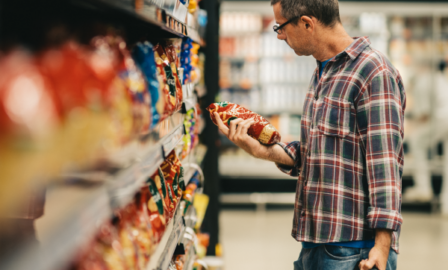Food and Beverage Industry Trends: Post-COVID Edition
The 2020 food and beverage industry trends have been significantly impacted by the COVID-19 pandemic. The novel coronavirus has changed how we shop, where we shop, and what we consume. Consumers have adapted to a new normal, creating and shifting trends that will outlast the current pandemic.
Buying Local
With constraints among national brand supply chains, and consumers becoming more conscious of a product’s origin, they are choosing to purchase locally. Ranking as the most important cause consumers care about, at 46%, the concept of buying local has gained traction over the past year. With the growing concern surrounding product origination, consumers are supporting local efforts and not solely relying on brand loyalty. Post COVID-19, consumers will continue to appreciate and prioritize initiatives whose impact on the future is beneficial and sustainable.
Spiked Seltzer Segment
Illustrating a shift from last year, when half of US adults were showing interest in drinking less, the COVID-19 pandemic has seen a 16% increase in adults stating they increased their alcochol consumption. This is a complete shift in consumer activity, and combined with an increased desire for ‘better-for-you products’, hard seltzers have skyrocketed in popularity. Nearly 40 brands have launched since 2019 and hard seltzer sales from June 2019 to June 2020 grew by 127%. With a better-for-you mindset and an increasing array of product selection, consumer support for this segment will continue to grow.
Increased Interest in E-commerce
Pandemic safety concerns have rapidly shifted consumer shopping trends toward eCommerce. The contactless experience and ordering from home brought many consumers to services, such as grocery delivery, resulting in soaring sales. Customer demand exceeded many company’s year-end forecasts, and according to Instacart, their demand projections for the next two to four years was exceeded in a period of 2-4 weeks. Even though there have been labor shortages and delivery delays, 83% of consumers are still willing to shop online, proving consumers are adapting to, and willing to, this new environment.
Brand Loyalty
Significant decreases in disposable income and product availability have forced consumers to adjust their purchasing habits. This has resulted in 48% of consumers being open to new brands. With both national and private brands becoming replaceable, consumers are branching out and engaging new brands. While availability is still a key consideration for shoppers, 72% say their decision is influenced by the brand’s response to the COVID-19 pandemic. The 33% increase in Americans that are willing to consider new brands, and a strong opinion of a brand’s actions during the COVID-19 pandemic, shows a trend towards brand disloyalty and an opportunity to earn new consumers’ loyalty.
Navigating the New Food and Beverage Industry Trends
As with essentially every industry, the 2020 food and beverage industry trends have been significant impacted by the global pandemic of 2020. Looking forward into the new normal, business leaders can begin to capitalize on the new 2020 food and beverage industry trends by approaching their business challenges with human-centric thinking to understand how shoppers and consumers are now purchasing, engaging with brands, and gathering information.



